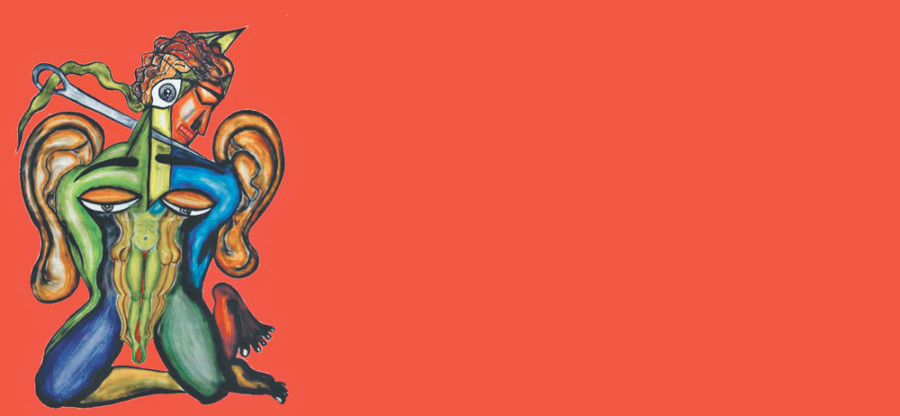Miscellaneous
The Dalit Question
According to the Hindu epic Ramayana, a Brahmin’s son dies at a young age in the Satya Yuga—the age of truth—when people were supposed to live long, fulfilled lives.
Shreya Paudel
According to the Hindu epic Ramayana, a Brahmin’s son dies at a young age in the Satya Yuga—the age of truth—when people were supposed to live long, fulfilled lives. Rama, who was then the king of Ayodhya, finds a surprising reason behind it—Shambuka, a Shudra (lower caste) man was meditating upon God’s name. Since Shudras were not supposed to do scholarly or spiritual work that was reserved just for the Brahmins, what Shambuka did had maligned the “purity” of the Satya Yuga. Hence, the Brahmin’s son died young. Rama then went to the place where Shambuka was meditating and cut off his head with his mighty sword.
I was deeply moved by the story when I was a child as I did not understand why Shambuka who was minding his own business meditating had to be killed by Rama just because of his caste. When I enquired about this with an elderly Brahmin man, who was well versed in Sanskrit, he answered, “You can’t just wash donkeys and make them cows.” It aches me to recall this, but he meant that the lower caste whom he referred to as “donkeys”, symbolic of ignorance and impurity, cannot be the same as Brahmins whom he referred to as “cows”, symbolic of knowledge and purity.
Hearing the news of Laxmi Pariyar committing suicide in Kavre several weeks ago, brought back the elderly Brahmin man’s words to my mind. A Dalit woman was accused of being a witch, tied up in a pole in public, beaten up severely and forced-fed faeces in front of her children. After this terrible humiliation, the poor woman committed suicide.
According to Pariyar’s son and other witnesses, Hira Lama was the man who allegedly did most of the crime. Whereas, Prem Kumar Chaudhary was the police man who refused to process Pariyar’s complaint. Instead, he had forced Pariyar to sign a ‘milaapatra’ (consensual contract) with Lama so that the case would legally stall. Here, both the persons who seem to bear responsibility for Laxmi Pariyar’s death are men. But despite not being Brahmin themselves, they had internalised the oppressive ideology against Dalits.
Shambuka and Laxmi Pariyar, though in different ages and contexts, depict extreme forms of oppressions against Dalits. But Aahuti, a prominent Dalit leader, states that the everyday problems faced by Dalits are rather structural than what the extreme cases of untouchability may point towards. There are not always villainous Hira Lama and Prem Kumar Chaudhari scheming against Dalits individually, but there is rather a structural glass ceiling against Dalits which restricts their social, economic and political mobility. About seven percent of all parliamentarians today are Dalits, which is far fewer than the percentage of the total Dalit population in Nepal. Dalits, who make up thirteen percentage of the Nepali population, have never seen a Dalit Prime Minister and have never chaired a major political party. Likewise, the Nepali class system, which according to Aahuti is based on the caste system, does not allow Dalits to climb the economic ladder. This observation does seem true when most of the business leaders are from a high caste.
Rarely a politically conscious Nepali would disagree that it is the Dalits who have been most oppressed in our society, based on their identity. Whether they are Pahade Dalits or Madhesi Dalits, they face same oppressions derived from the Hindu caste system. However, sadly enough, Nepali Dalit activism has not been able to see itself rise as a great movement in the same way that Madhesi or Janajati activism has. Nevertheless, though gradually, the movement has been able to secure numerous gains. For instance, as an important symbolism, the Jhalanath Khanal government began to mark Jeth 21 as the Day Against Untouchability. Likewise, Baburam Bhattarai as the then Finance Minister attempted to fund Dalit-led co-operatives and provide social security funds to elderly Dalits. However, these more substantial agendas are yet to be implemented in the best possible ways. Among other concessions, ‘Fundamental Rights and Duties’ of the present constitution also notes, “Person from Dalit community shall have right to get employment in civil service, army, police and all other agencies and areas of the State on the principle of proportional inclusive principles. Special provision shall be made for empowerment, representation and participation of Dalit community in public service and other sectors of employment as provided by the law.”
Empowering Dalits by positive discrimination should not be frowned upon as is done in some circles. It is precisely because they have had much lesser opportunities than non-Dalits that they are still seeking equality in the Nepali society. According to National Social Inclusion Survey, 2012, the literacy rate of Dalits in Nepal is 52.4 percent compared to the national average of 65.9 percent, while only 34.5 percent Madhesi Dalits are literate. Likewise, Nepal Living Standard Survey in 2010 stated that 42 percent of Dalits fall below the national poverty line which is substantially higher than the national average of 25.2 percent.
There is also a tendency to take personal offence when Dalits point their fingers towards Brahminism which gave them the ‘untouchable’ socio-economic status in the Hindu society. Here, Dalit activism is not against all Brahmin individuals, rather it is against the cultural and religious ideological practice which has oppressed them after Manu Smriti was implemented in Hindu kingdoms. Therefore, the least well-meaning Nepalis can do is acknowledge that caste discrimination has occurred structurally in the past. Only then can we redress the situation in the present and do whatever little we can from our respective positions to help the Dalit movement.




 7.12°C Kathmandu
7.12°C Kathmandu










